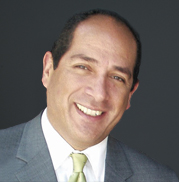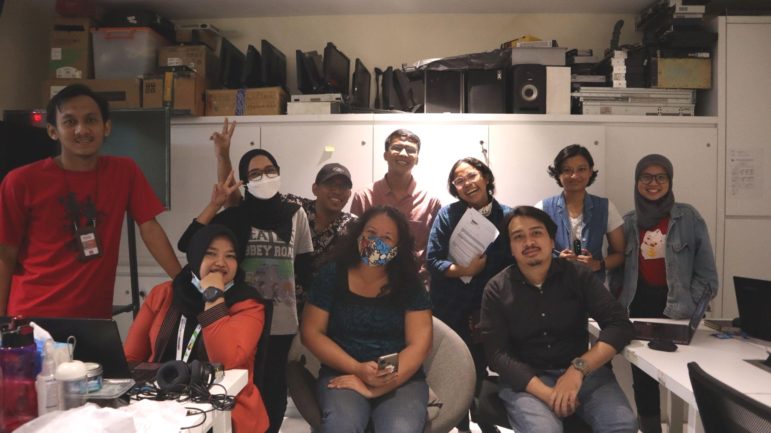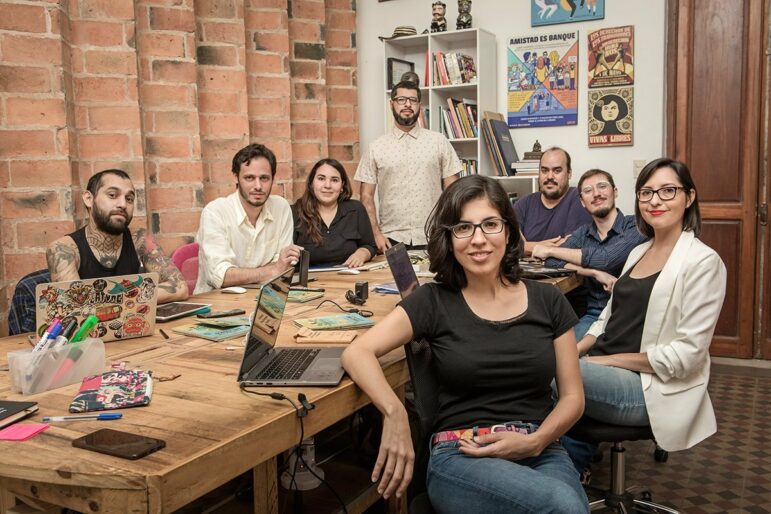

Seven Ways Small and Medium Nonprofits Limit Their Fundraising
I have found myself these days looking at the WebMD app on my iPhone. They have a neat symptom checker which allows you to go down a list and make a diagnosis. Of course it’s full of disclaimers as it should be and I think it’s slowly making me a hypochondriac. However, I thought of that app when I thought of this article. I wanted to create something written for nonprofit board members and leadership so they could assess their organizations’ fundraising health. It’s not a fancy app, sorry, but it’s based on my 30 years of experience in fundraising. (Note: fundraising is often called development at nonprofit organizations.)
I am an unusual fundraiser because I have raised money for a range of organizations, from the grassroots to Ivy League billion-dollar campaigns. I have spent my career recognizing the dramatic “achievement” gap that fundraising creates in nonprofits nationally. Universities, hospitals, and others run huge campaigns based heavily on individual major giving, some foundation and corporate support. They have large veteran and well-kept staff. If someone becomes wealthy, chances are one of these institutions will be working to get to them. Then of course there are the small and medium institutions that rarely grow despite their own wishes to do so. Why?
When it comes to small and medium organizations, I personally have seen a consistent chronic under investment in fundraising and a consistent lack of understanding of the work. It’s not just about small and medium nonprofits learning key methods and techniques of larger institutions. It’s about changing the culture around fundraising, especially individual major giving. Small and medium nonprofits all rush to the same foundation doors year after year. Foundation fundraising is easier to understand and doesn’t involve talking to individuals about their own money. Individual major gifts work is risky, harder to understand and involves talking to individuals about their money. Which unfortunately some consider “dirty.”
So year after year these same nonprofits stay small. So do their programs. So does their impact — regardless of whether they have an effective program feeding the poor, helping kids read, saving wild animal species, or transforming communities. Most of the time the boards of those organizations are eager to expand and deepen a proven successful program. Right?
The only way to do that is better fundraising. The only way to better fundraising is to go beyond learning about fundraising. It’s to embrace it as an honorable profession, a noble endeavor for a board as well. It’s not dirty or yucky, quite the contrary. As I like to say, “Fundraising is Beautiful.” If this step isn’t taken we will always being doing this work reluctantly, it will always be the spinach on the plate we “have to” do.
So check out my common symptoms and ask yourselves the hard question: “Do we do this” or “Is this us”?
I have seen institutions do this, look in the mirror, and it’s not easy.
I have advised them to embrace fundraising and go beyond understanding it. Once they understand the power of a strong fundraising on their programs they want to deliver, it’s a new day.
Okay, here is that list. Discuss it as a group if that helps. Forgive the humor in the titles, but these are difficult subjects.
1.“My Board would rather have dental surgery than do any fundraising”
In my mind this is the #1 nonprofit crisis. A board afraid or avoiding any fundraising is a devastating thing to any organization. You can raise money without an active board, but you’ll only go so far. Unrealized potential is a hard thing to quantify, but it’s real. It’s the secret that successful institutions have learned. We all know that common fear is “asking my friends for money” or “arm-twisting” myth. These need to be corrected with education and that fundraising takes all kinds of forms. Good teams have a few board members who can ask for money, rarely from friends, but from identified and researched prospects which have been cultivated. Most board members will make important introductions for the development officers, host a dinner, or go along on a foundation visit to answer questions.
Most board members and leadership are part of an organization because they are passionate about what that organization does. Harness that passion and embrace fundraising, honor the work, and start learning. If you help your development officer get the right meeting, tell the story of the institution and then your “fundraising.” Some board members can learn to ask for money if they want, some are great at it. But most of the time your development officer can do that.
2. “What about asking Bill Gates?”
Oh no, I have actually heard this! I joke about Bill Gates as a prospect but the common idea is that if we find rich people we ask them for money. That’s fundraising! Board members and leadership need to understand the full fundraising cycle: Identification, Qualification, Cultivation, Solicitation and Stewardship. As any old crusty development veteran like me will tell you, identification is half the battle. If you do your prospect research and identify people who are passionate about your issues, and are philanthropic and wealthy, then you’re literally half way there to a major gift.
Any university will have teams of “prospect research” professionals. Yes, it’s a profession. Complete with its own professional organization (APRA), standards, conferences, ethics, etc. Right now a university prospect researcher has the tools to identify a donor of yours who just sold her company for $300 million dollars. She is already in love with your small nonprofit, but you’re unaware of her new wealth. The local university she went to is, however, and they will get a starter gift of $350,000 from her this year. That could have easily been your gift, but you simply didn’t know.
The lack of prospect research is one of the most crippling parts of fundraising for small and medium nonprofits. There is nothing more expensive than spending your time with the wrong people. Prospect research is also work that is highly focused on individual major giving, so many nonprofits haven’t hired that position, because they have been foundation focused. Many think prospect research is too expensive and the domain of large institutions. It’s not. There are all kinds of ways to get good actionable research. A full time staffer, part time, or freelancer are some ideas. I liken it to hiking in a dark forest with or without a flashlight. Think of how expensive it is NOT to have one.
3. “The Myth of the One-Person Development Shop”
It’s the institution that wants to grow financially but has just one development director to do everything. Annual mailings, major gifts, planned giving, corporate, foundation grants, records. Sometimes they toss in marketing! What one gets is bits and pieces of what are three to five staff positions. Also, the skill set for a good grant writer is very different than a major gifts officer.
There are institutions that do well with one development officer — for example, small groups with no pressing growth needs, where a development officer has been there 20 years and has all the relationships, etc.
I speak at many conferences with rooms full of development officers of all ages. I see burnout, the disenchantment of the overburdened development officer, often just starting in our profession. They are given 70 hours of work for a 40 hour week. Simply put, well-meaning leadership and boards often don’t understand what the work entails. How many hours does it take to write a major grant, put together the annual mailing or call a list of major donors? Most executive directors and CEOs don’t come from a development role, they come from programs. They can tell you what the program work entails down to the hour.
If you ask your development officer if they have enough time to get their work done, they are going to tell you something positive. Because you’re their boss, they want to keep their job, and they don’t want to whine. I recommend small teams of fundraisers for even small nonprofits. Set realistic goals, roles, and calendars. Go deep into each sector of revenue. Properly planned it’s almost always a smart investment.
4. “I am having a crisis, how about you?”
This is about crisis fundraising vs strategic fundraising. The former prevents the latter. Many institutions suddenly “discover” fundraising when bad financial things start to happen. Development officers are asked across board rooms if they can save the day. Many do. If the crisis is averted everyone wants to forget about fundraising until the next crisis. Strategic fundraising: Diversifying your funding with individual donors, growing your annual appeal, trying new online methods all cost money and take time. It’s speculative money and they take years to produce solid results. However, this type of work is exactly what you need to avoid the unhappy merry-go-round of crisis fundraising.
Too many organizations shudder at the investment in development up front. After new positions are created, new expenses are incurred and sometimes they want immediate results. They liken it to corporate sales, but it’s different. What drives development officers crazy is when you see deep and generous investment in the program side while they crawl along with meager resources and staffing. Invest in your development operation so you can spend safely in your program side.
It sounds simple, but the list of organizations I have seen that spend freely on the program side and then rush to a development officer to balance the budget is long. Commonly this cycle is repeated again and again. My motto is spend what you can safely fundraise. Want more? Invest in fundraising. It’s not “overhead” and it’s not wasteful.
5. “I like the plaque but can I have health insurance”
I have heard so many people appalled at the tenure of development officers. When we should instead be asking how to retain good people.
I knew a development officer several years back who had been at a medium-sized nonprofit for 3 years. She literally has doubled the budget in that time, brought in their first major donors. Her boss who knew little about fundraising was of course thrilled and had strengthened the program, hired more staff. Yet this development officer couldn’t get a raise or health insurance! At a board meeting they gave her a plaque thanking her for her service!! She quit a month later and found greener pastures. The cost of her departure was immense but somehow nobody saw that coming?
This isn’t just a sad story, it’s a common story — the unwritten idea that money spent on fundraising and fundraisers is wasteful overhead and must be kept down.
Retention of development staff is essential. Especially if this person is successful and has helped stabilize your institution. Keep them. If your organization has had bad turnover, find out why. Call up your previous development officers who no longer draw a paycheck from you and ask them. Look for a theme. You could be paying too little, asking too much, or have poor leadership. The longer a development officer is in a position, generally they become more valuable. Our work is relationships. The more we have established for our nonprofits, the more money we can raise. We are all driven by missions, but when you treat us with respect, honor our work, and compensate us well, we stay.
6. “Moe, Larry and Curly”
Ever see those old Three Stooges episodes? I grew up on them. There is a famous gag where the two of them try to walk through the same doorway at the same time.
That’s my analogy for institutions that only rely on foundations for funding. It’s crowded with every other organization applying to the same foundation, rushing that door. Of course, there are some organizations that have long term commitments, are secure in a major relationship. That’s great, good for them. But there are many more that are small organizations because they refuse to leave the world of foundation fundraising. If they diversified their fundraising they could grow and do more great work.
Foundation fundraising is widely understood. When it’s done well it can involve identification, qualification, and cultivation just like individual major giving, but many just write a grant proposal, mail it, and wait. But its super finite, as foundation folks will tell you. And it doesn’t last forever.
The solution many boards come up is to hire a major gifts officer and sit back and wait for the stock certificates to come rolling in. Yes, many can get some traction with individual giving early. But major gifts staff with good prospect research, strong board support and introductions, events support, and other aspects make a lot more money, a lot faster. I have seen this situation again and again where a “fundraiser” is hired, often cheap and with no experience. They are not only expected to continue the grant fundraising but magically start a major gifts program! Bottom line is its two different jobs — in skill sets and amount of time needed.
So if you want to diversify your fundraising, allow time and hire a small team to make it happen. You may focus your staff early on where the money is for you. Maybe it’s corporate fundraising. Maybe it’s mass mailings. Hire around where the early money is and use that to fund that department’s expansion.
7. “Trust me, I am a Doctor”
This one reminds me of all the well-meaning bosses, executive directors, vice presidents, and presidents who think they understand fundraising but don’t. Some are aware they don’t know fundraising but won’t share that with anyone for fear of looking unqualified or weak.
One of my favorite bosses was a school reform expert. She was brilliant, published, and a national authority. When I started, she said to me, “I don’t know enough about fundraising to fill that trash can” and “Can I learn from you”? We had a great working relationship and raised lots of money!
Another colleague worked for a famous medical researcher, a man who was practically a household name in the medical community. Clearly a brilliant man, but he kept making inept fundraising decisions, squandering relationships, and burning leads that his very capable development officer had worked years to bring him. When she tried to help him learn a bit he responded angrily, “I went to 8 years of medical school I think I can figure fundraising out”!
Because you’re a great doctor, business person, journalist, or educator doesn’t mean you’re great fundraiser. It’s a profession. It’s our job to make your fundraising easier, take less time, and be more effective. Trust us.
Conclusion
So what’s your fundraising health? Of course, hiring development officers isn’t an automatic recipe for financial growth. There is crafting the right message and having some level of competence in your staff. Perseverance, creativity, and daring are all required. There are a host of excellent professional development groups. In the United States, the Association of Fundraising Professionals (AFP), Association of Professional Researchers for Advancement (APRA), and the Young NonProfit Professionals Network (YNPN) all do excellent jobs of training even new staff.
I encourage non-development leaders of institutions to attend development conferences as a way of learning more about the depth and complexity of our profession. There are also nonprofits that have programs that haven’t proven successful, or are in places where the landscape is very competitive. We all know these factors better. I emphasize the last seven points because they aren’t understood or talked about too often. If you’re fundraising for something new or unproven it will be harder.
What’s remarkable is of the seven points all are relatively easy to fix. None of these is insurmountable. Most are based on misinformation about the development profession and fundraising. It doesn’t help that fundraising is treated externally like it’s something to avoid and be afraid of. This promotes misinformation and all seven practices I have just listed. As I mentioned previously, it’s not enough to learn about what fundraising is, it’s vital to honor the work. Once that has been achieved, learning about fundraising, about what you need to know is easier. Good luck with your check up and good luck making the changes you need to make! Raising money for doing good! Let’s do more good!!
This post originally appeared as a LinkedIn post. It is re-published with the author’s permission.
 Armando Zumaya is Vice President of Fund Development at BRIDGE Housing Corp. and leads the organization’s fundraising strategy. He has over 25 years of experience developing and executing highly successful fundraising programs for a broad range of organizations, including the American Cancer Society, San Francisco Opera and Springboard Schools. As National Campaign Director for UC Berkeley, he founded major gifts committees in New York and Wash., DC.
Armando Zumaya is Vice President of Fund Development at BRIDGE Housing Corp. and leads the organization’s fundraising strategy. He has over 25 years of experience developing and executing highly successful fundraising programs for a broad range of organizations, including the American Cancer Society, San Francisco Opera and Springboard Schools. As National Campaign Director for UC Berkeley, he founded major gifts committees in New York and Wash., DC.









